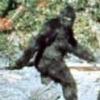I think the sign we leave going to and from a camera could be part of the equation. If they are anywhere near as superlative at tracking as they are at stealth, they are likely to read our tracks in the forest as easily as we read a bear's tracks on an open sand bar. If so, every time we go to our camera, we leave a "trail of crumbs" that attracts their attention to the exact spot we don't want them to look. If our trails from numerous visits converge on a specific tree, they're going to look that tree over pretty carefully. That makes it much harder than merely hiding a camera in a great big nondescript forest, we have to hide that camera on the particular tree they're looking at. It raises the bar for hiding a camera a long, long ways.
I'm addressing that by only visiting my cameras once a year or so, at least for the ones that have capacity to store enough pictures and battery life to go with it. I think the other situation that might offset that, if that's indeed what is happening, is high traffic areas that have a LOT of humans passing through to obfuscate the tracks going to and from the camera location. That could be hiking trails, campgrounds, or habituation sites.
I think it might be possible to partially test this idea. The best human trackers we probably have are US Border Patrol. It would be interesting to see if they are able to more quickly locate trail cameras in the woods than run of the mill outdoors people.
MIB


